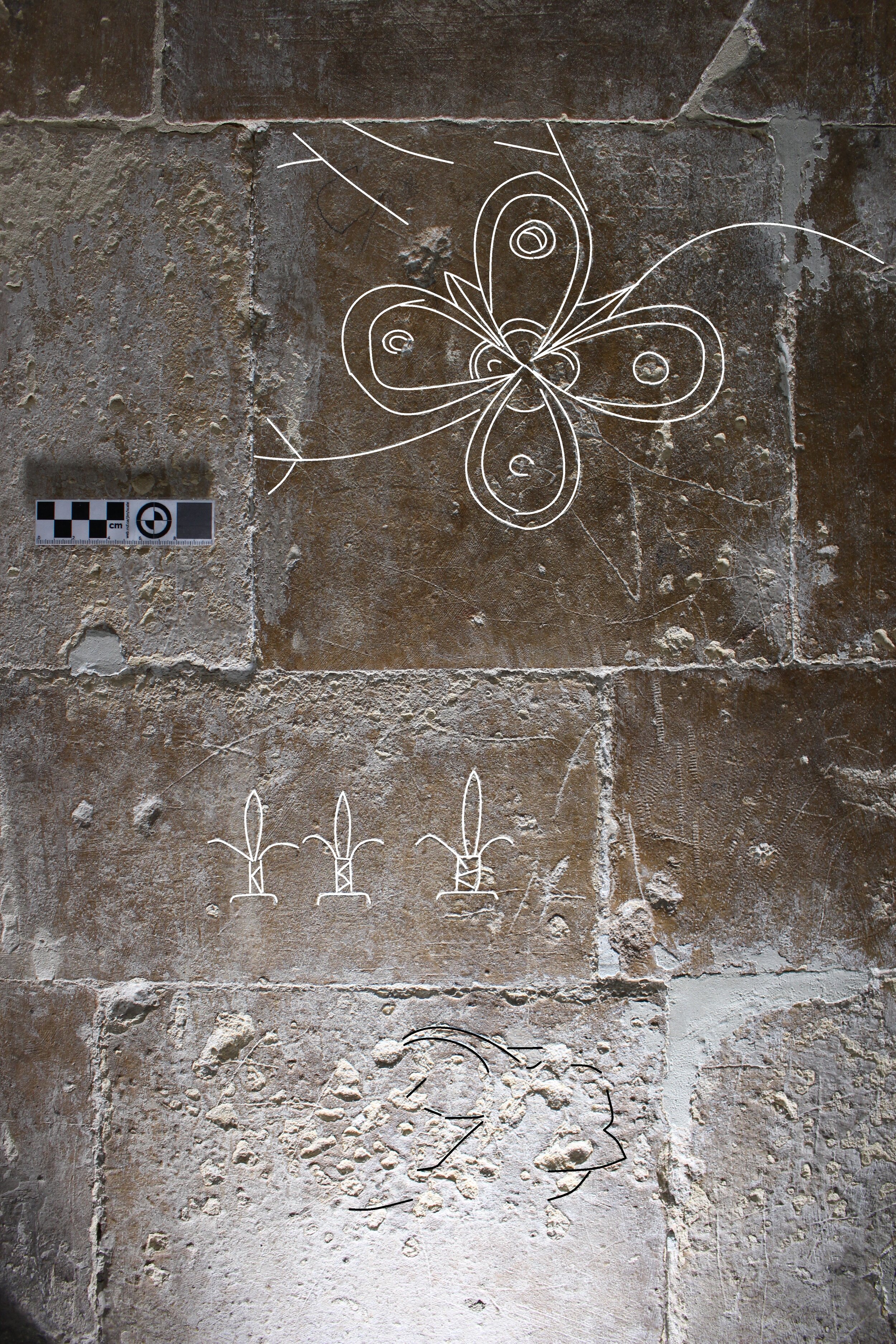People, animals and beasts graffiti
/
People, animals and beasts graffiti
September 29, 2021
Humans are the most common subjects in the pictorial graffiti record. Two body parts are tentatively interpreted as medieval devotional designs, unique among the dozens of cartoons and caricatures.
People
A small fist with a raised index finger occurs on the west shaft of the fourth-west pier in the north nave arcade (4.10A). The index finger appears to be a stub. What might be a foot and calf with a long medieval shoe occurs on the easternmost pier in the south nave arcade (4.10B). Traditions of leaving images of diseased or damaged body parts in the vicinity of shrines in an invocation of healing is well documented in the Middle Ages.
A crude lightly inscribed Christ crucified accompanies a star of David in the crypt (4.10C). A deeply incised Christ in Majesty first recorded by Swanton in 1979 occurs on the fifth-west pier on the north nave arcade (4.10D). A crude head and upper torso in half-profile with a downcast face and a wide-rim hat is inscribed on a pier in the west arcade of the crypt (4.10E). What might be an android is deeply incised on a pier in the east arcade (4.10F). An incised grotesque and a human figure on the eastern nave triforium are conveniently labelled as gargoyles (4.10G). Inscribed facial features are recorded high in the north quire transept, possibly created from atop box pews (4.10H). A small solitary dumpy figure is amongst the graffiti on the exterior of Garth House (4.10I). All remaining inscribed faces and busts are depicted in profile (4.11). Three feature headwear, two of which are possibly hoods (4.11A and B) and the third appears to be a tall pitched hat (4.11C). A face in the south nave transept may form part of a herald (4.11D). A well-formed chiselled figure with long hair is within a window recess at the top of the spiral staircase in the north quire transept (4.11E).
4.13 The wooden case of the clock mechanism in the Bellringing Chamber.
On the fourth-west north nave arcade pier, two large human figures stand in profile with hoods and beards (4.12). These robed figures and the hooded busts might be the only surviving images of monks from the priory at Rochester.
Many more faces and full-figures feature in a cluster of figural graffiti in the Bellringing chamber.
Bell Ringers’ Chamber
The large nineteenth-century clock mechanism cabinet within the Bell Ringers’ Chamber (4.13) features 80 pictorial graffiti formed by a white substance (4.14 to 4.19), possibly the whitewash that is covering the walls of the chamber. They are among the most fragile of sequences within the cathedral. Amongst an untidy cluster of names and bell-ringing diagrams are dozens of drawings of grotesque faces, men in bowler hats, flowers, a swan and a skilfully drawn cavalryman. Several greasy handprints occur on the secluded side of the cabinet (4.20), presumably belonging to one of the many teams of twentieth-century clock engineers.
Noted on the door of a small cabinet in a cupboard in the north-east corner of the chamber are several graphite and ink names of bell ringers and members of clergy from the early twentieth century:
4.14 High-contrast negative photographs of paint drawings on the clock mechanism case (1 of 6). (A-D) East face.
4.15 High-contrast negative photographs of paint drawings on the clock mechanism case (3 of 6). (A-D) Front of North-East doors. (E-F) Reverse on north-east doors.
4.16 High-contrast negative photographs of paint drawings on the clock mechanism case (2 of 6).
4.17 High-contrast negative photographs of paint drawings on the clock mechanism case (5 of 6). (A-B) Reverse of north-east doors.
4.18 High-contrast negative photographs of paint drawings on the clock mechanism case (4 of 6). (A-E) Reverse of north-east doors.
4.19 High-contrast negative photographs of paint drawings on the clock mechanism case (6 of 6).
4.20 High-contrast negative photograph of hand-prints on the clock mechanism case.
‘Archdeacon Cheetham 1908’, ‘Archdeacon Rowe 1915’ and ‘Dean Storrs 1928’.
The central tower, of which the Bell Ringers’ Chamber is the lowest floor, was used as a lookout during the First and Second World War. The dates and times of bombing raids are noted on the door of a small cabinet within the cupboard: May 29th, July 22nd, January 25th, February 1st, 15th, with two further days 1st and 8th of indeterminate month (4.21).
The fire watch. Upside-down graffiti on bellringing chamber exterior.
Plants and Animals
Fauna, a small collection of flora and two or three cryptozoological examples lurk among the earlier graffiti clusters of more common names and dates. Two pigeons, one on a pier in the crypt and another on the north nave transept triforium, and a small beetle outside of Garth House might have been drawn from life. All in profile, they predominantly appear to be cartooned doodles. Several graphite monkey faces are dotted around the crypt and the Lady Chapel. They give the impression of being hidden around the building to be discovered as part of a game. What appears to be a very lightly incised cow may actually be incidental marks from a restoration of a window in the sanctuary, or else a modification of an incidental mark.
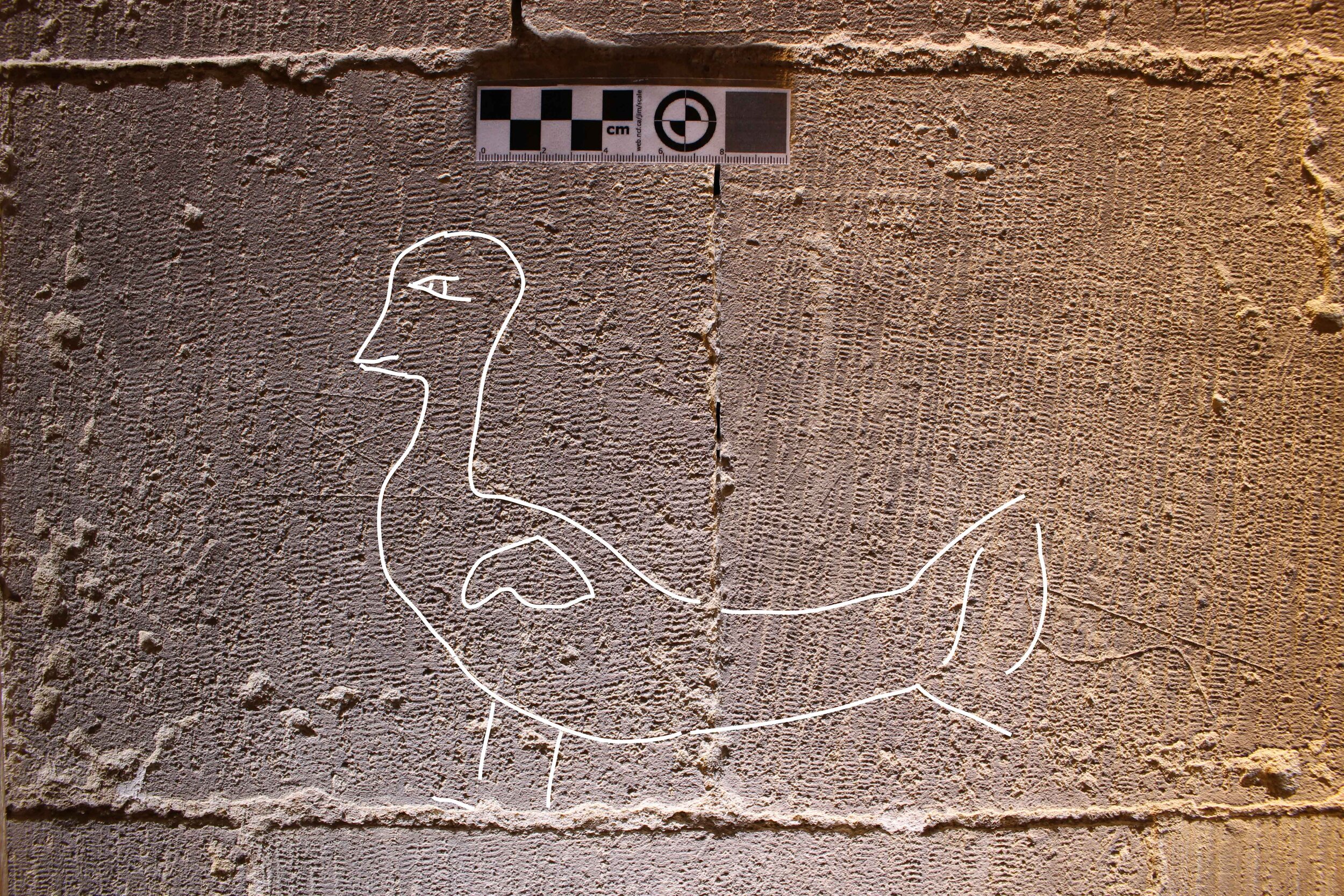
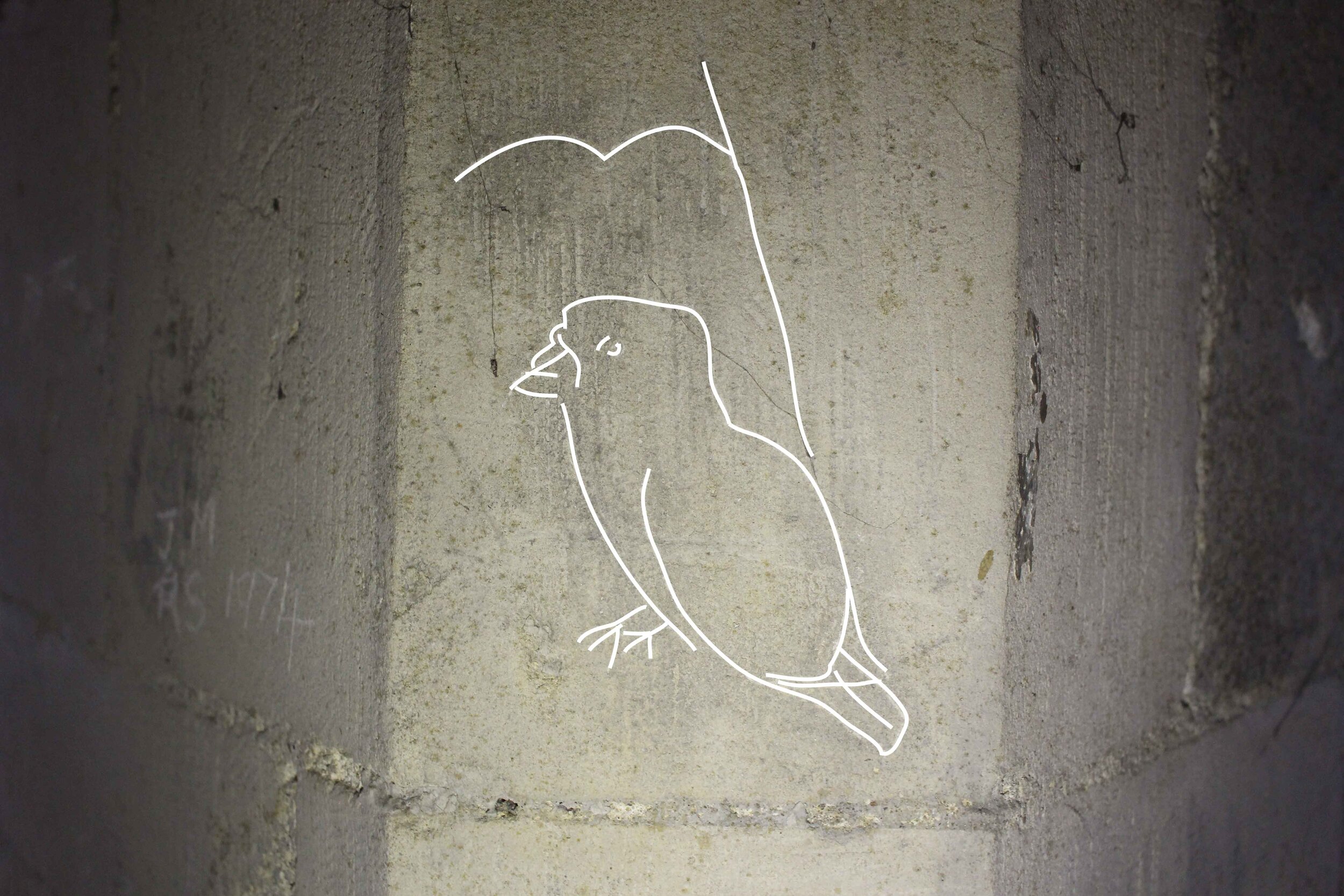
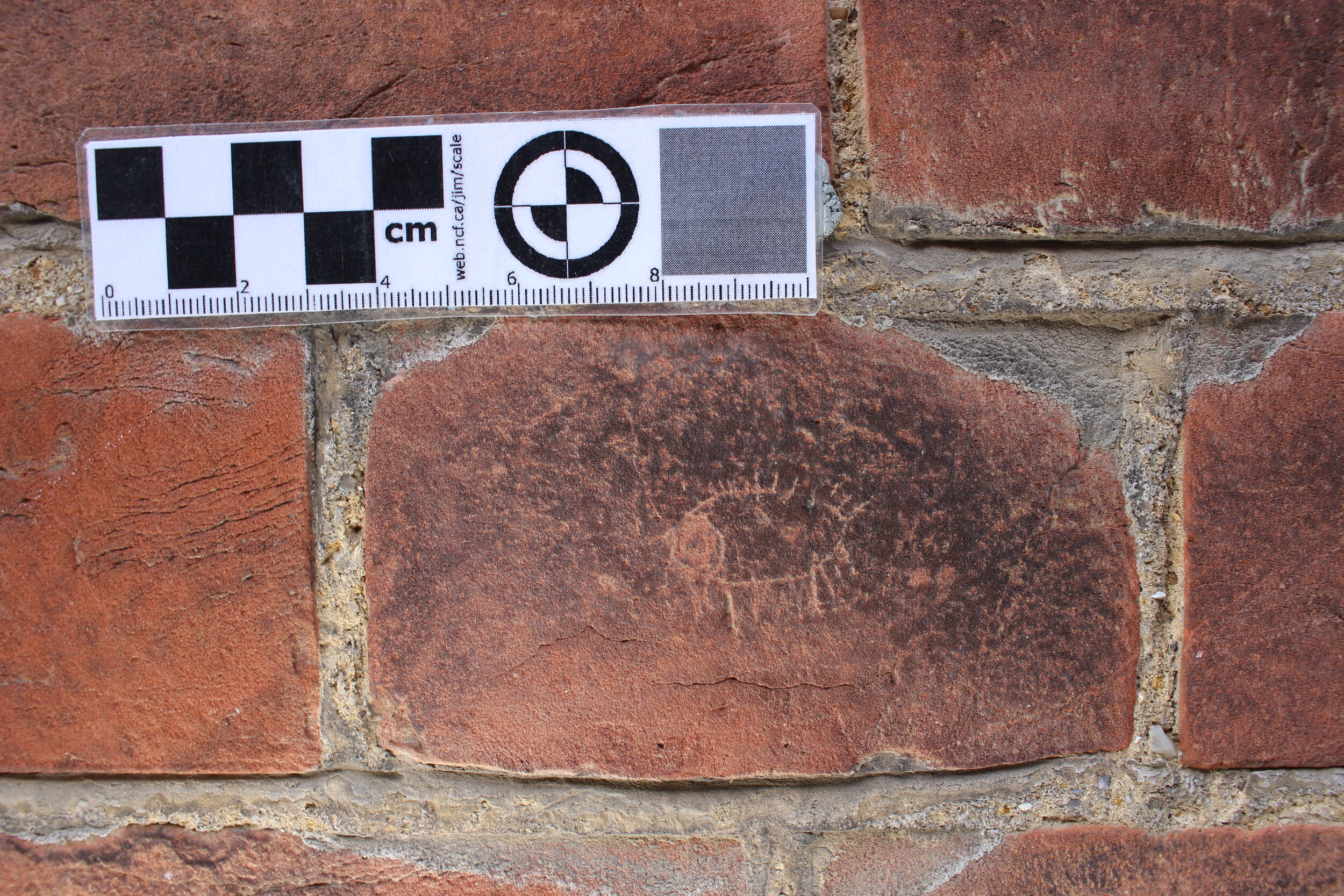
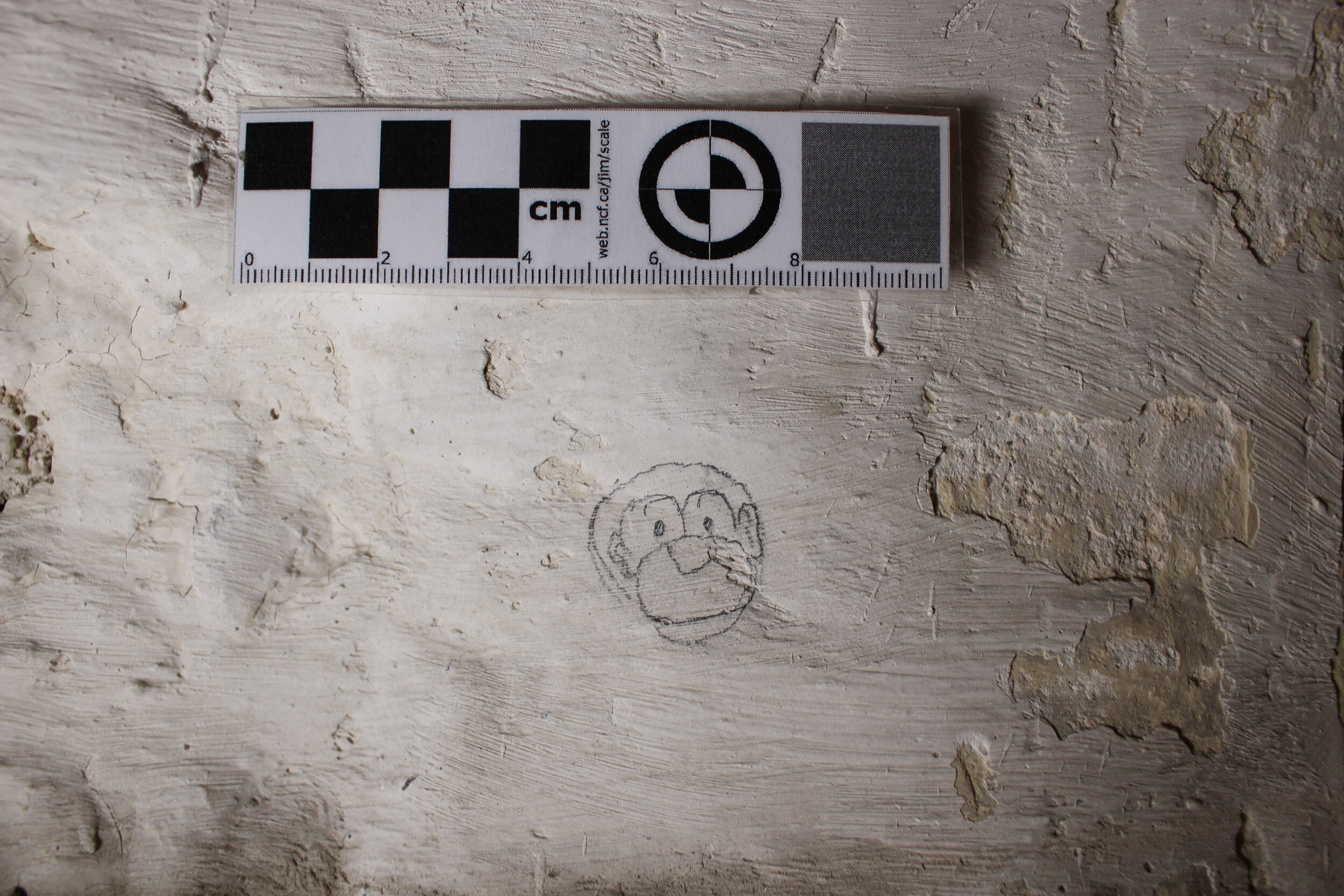
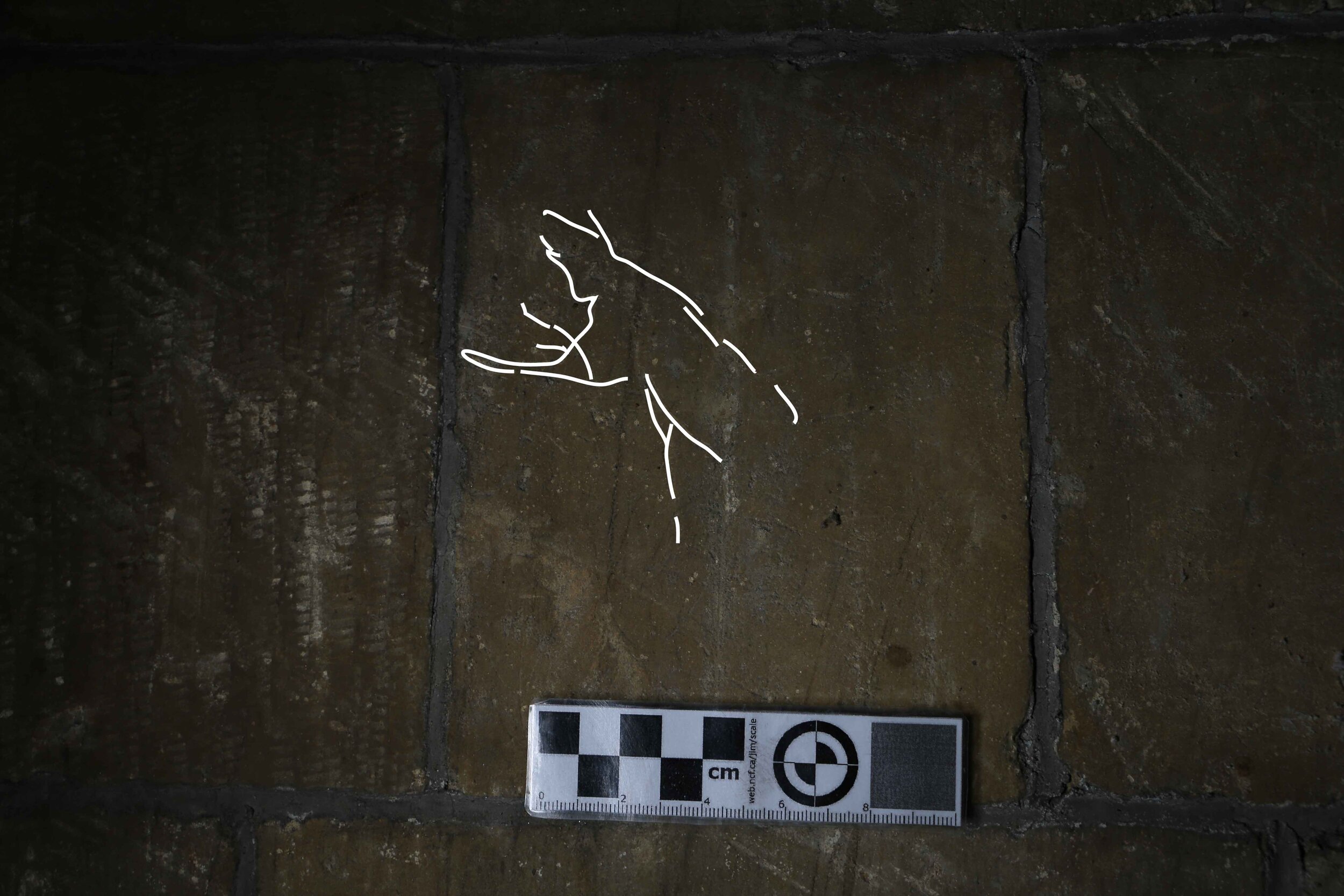
What might be a fragmentary fish survives on the doorway to the monks’ dormitory in the east range of the cloisters. A serpentine dragon is inscribed at keeling height on the west face of the fourth-west pier of the north nave arcade. A small head and upper limbs of what may be another dragon is inscribed on the south face of the south-east pier the south quire transept. A possible inscribed elephant is on the south wall of the transept, amongst many undeciphered fragmentary incisions. Few examples occur near or in association with inscriptions to provide further context in understanding their creation. A graphite cow on the nave triforium is signed by an ‘M. C. Cronk’. ‘H. CRONK’ has inscribed five graffiti around the triforium and roof spaces from 1888 to 1898, suggesting some relation of the latter has created the cow graffito in the late nineteenth or early twentieth century. Undeciphered script accompanies a stag on the west face of the third-west pier in the south nave arcade.

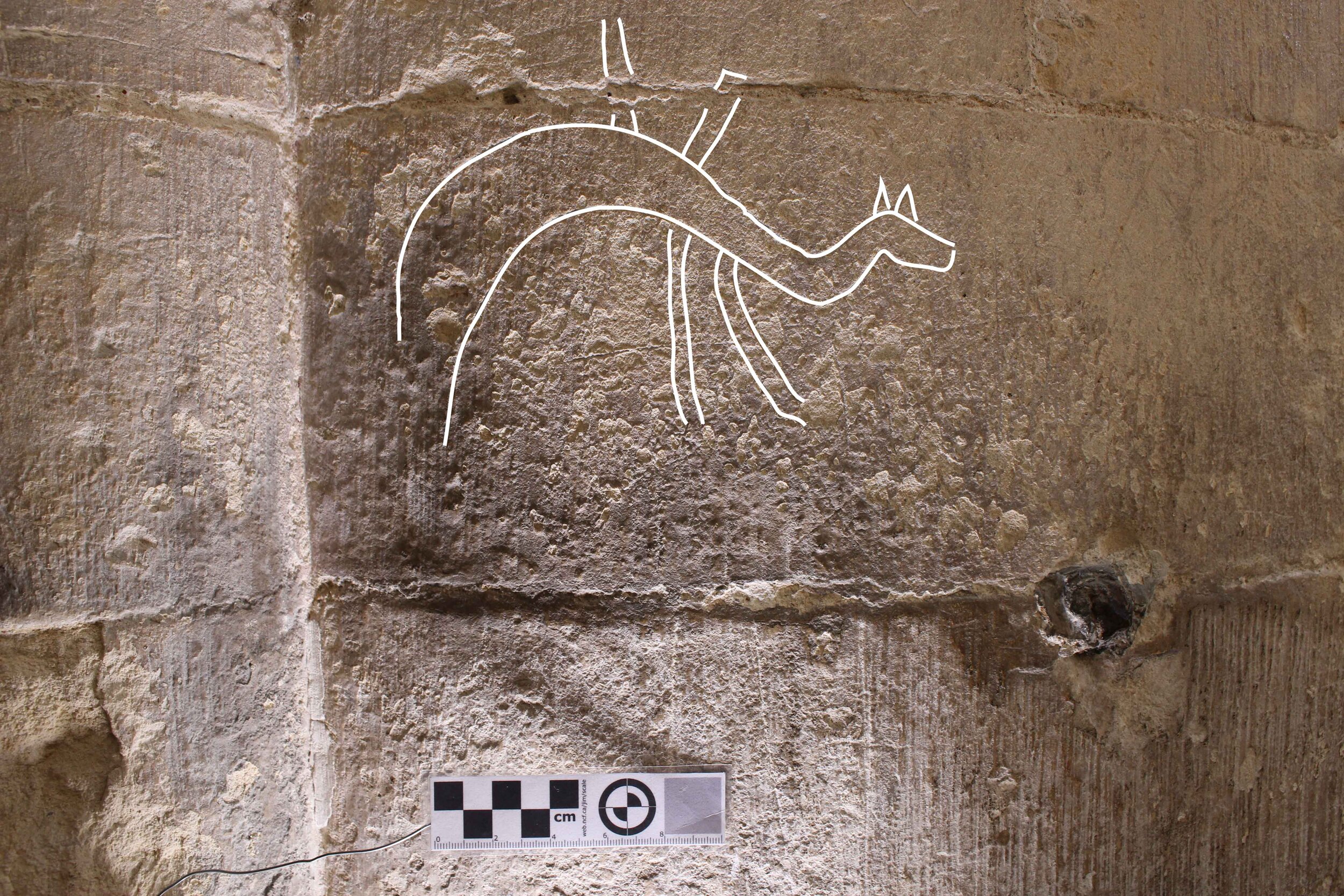
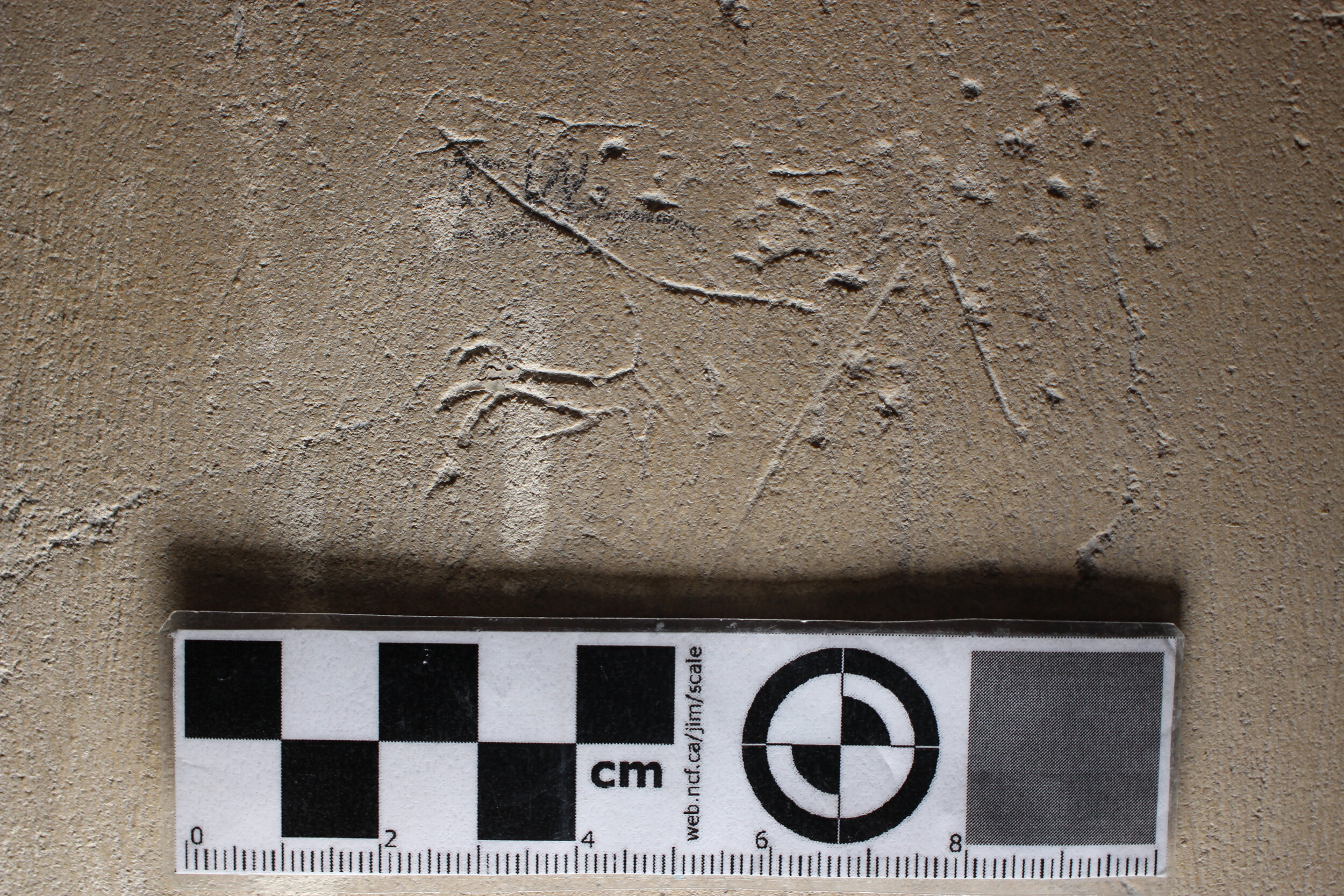
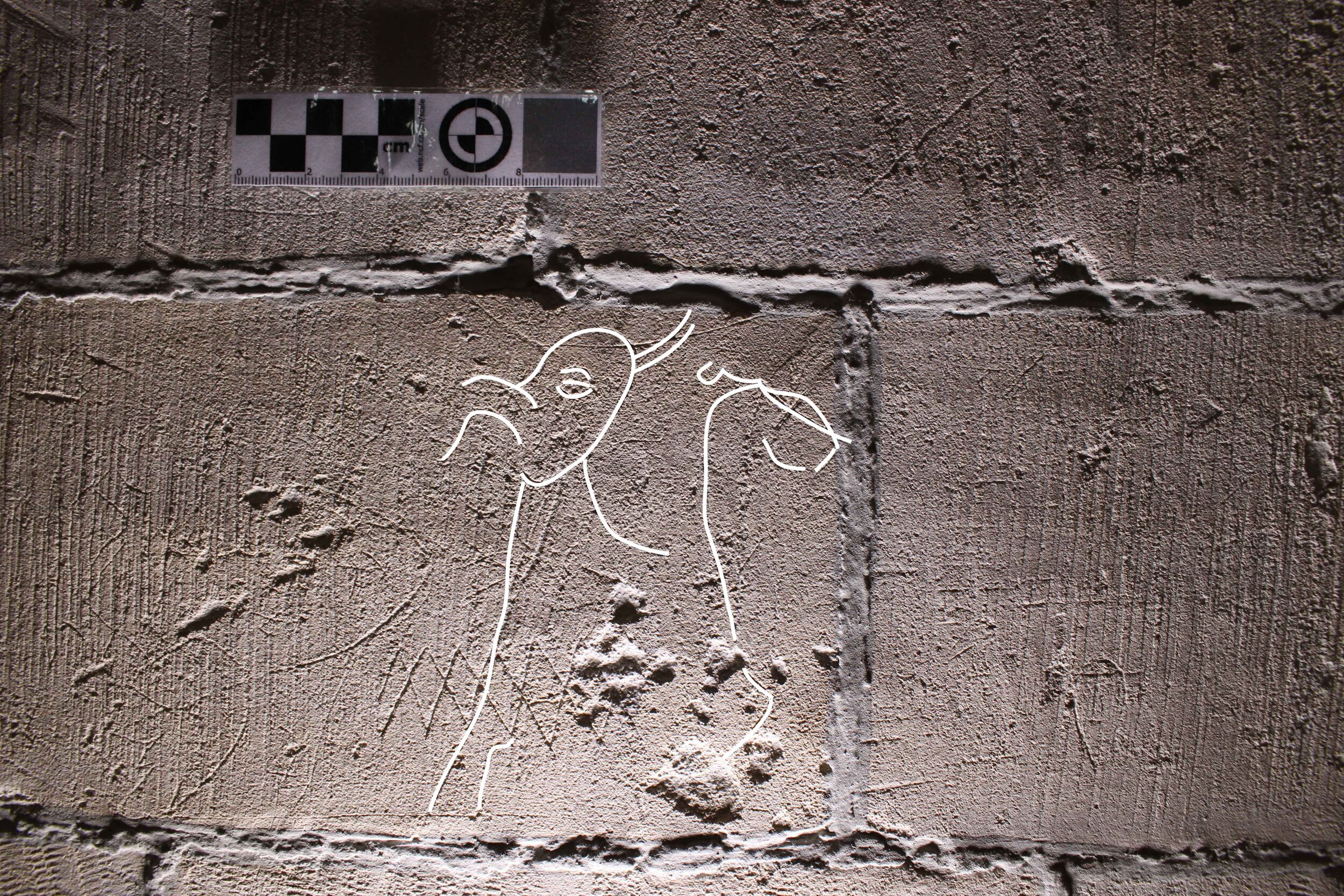
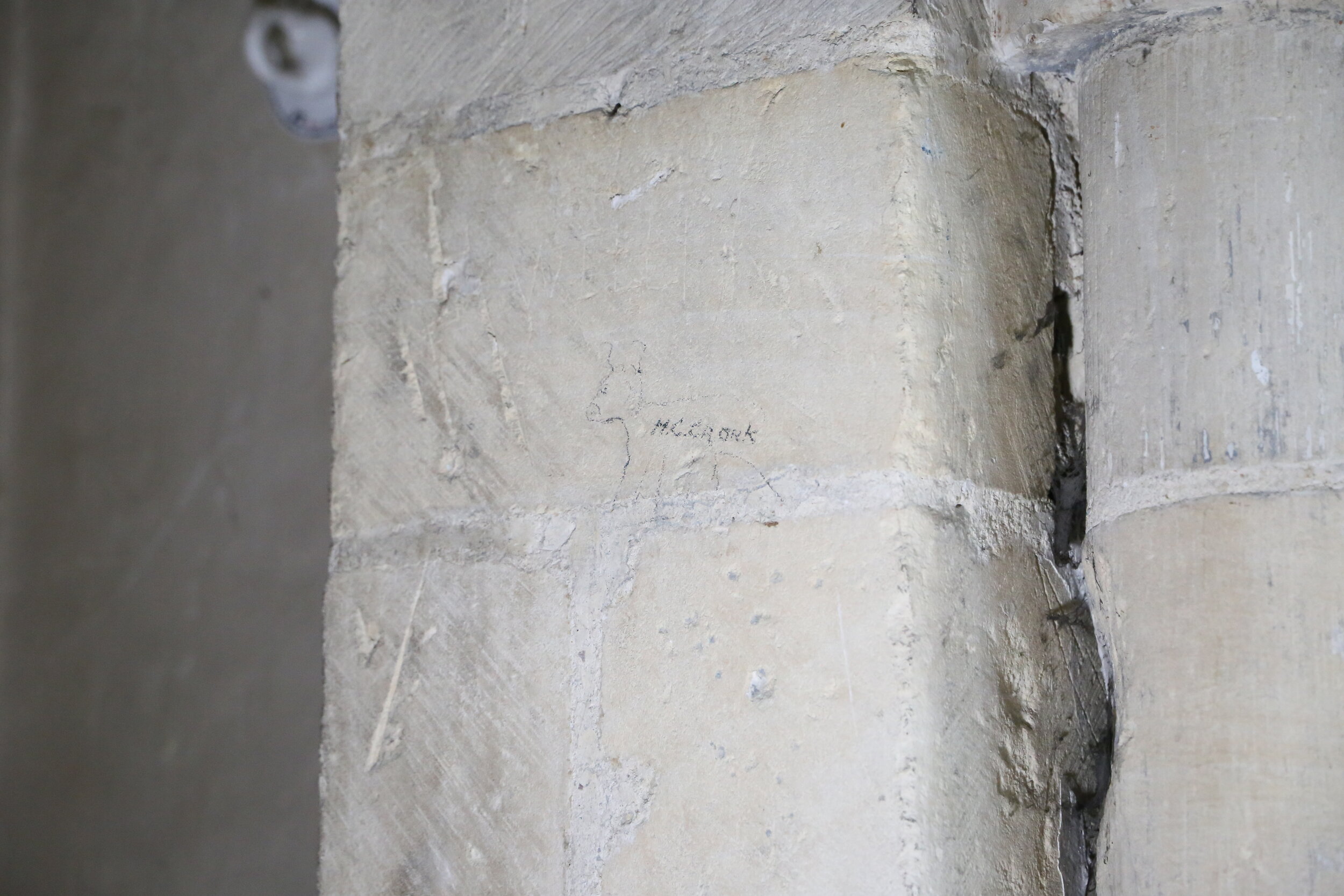
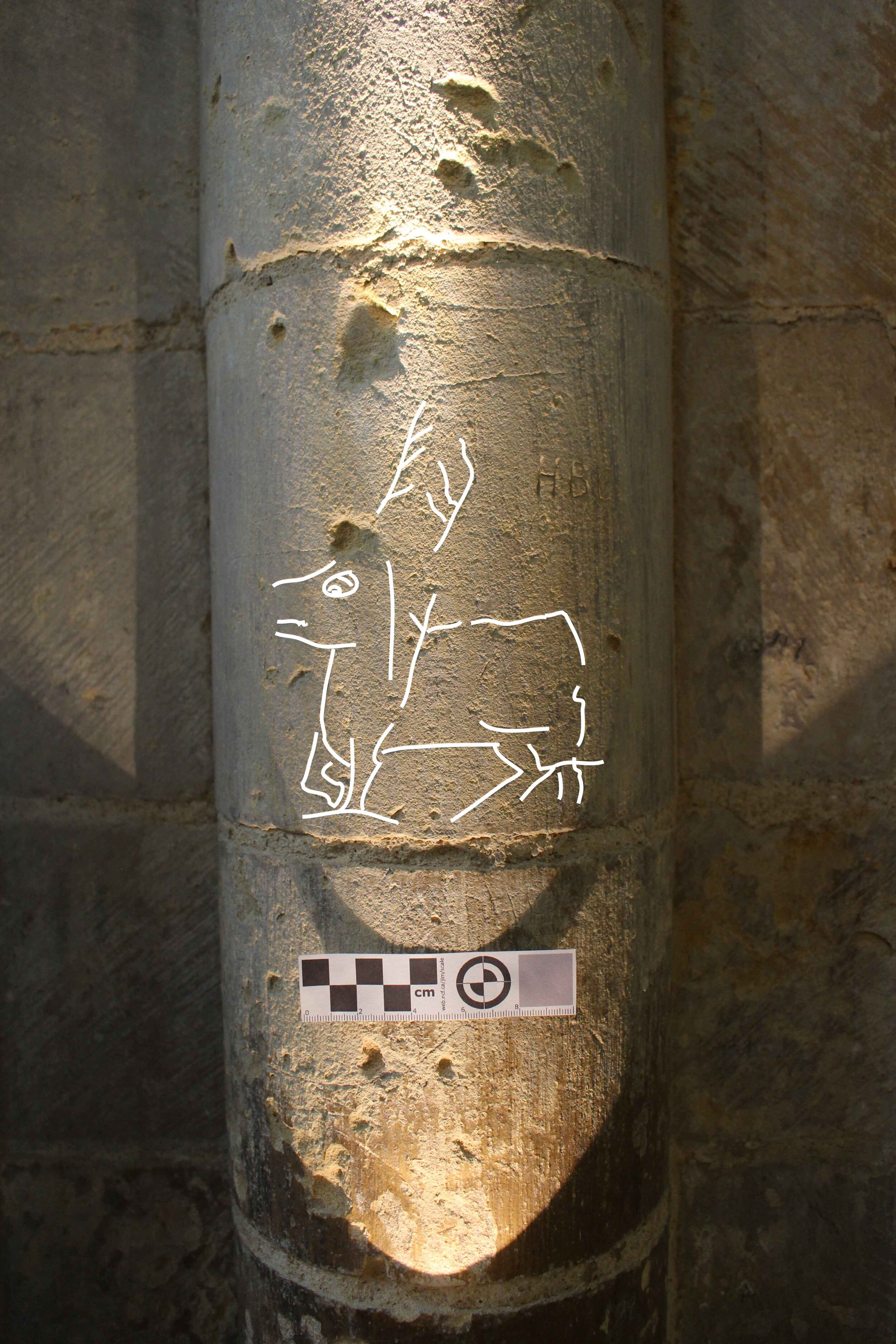
Horses, possibly a strange bird-like creature, a lion and a shark are present within a painted graffiti cluster in the Bellringing chamber.
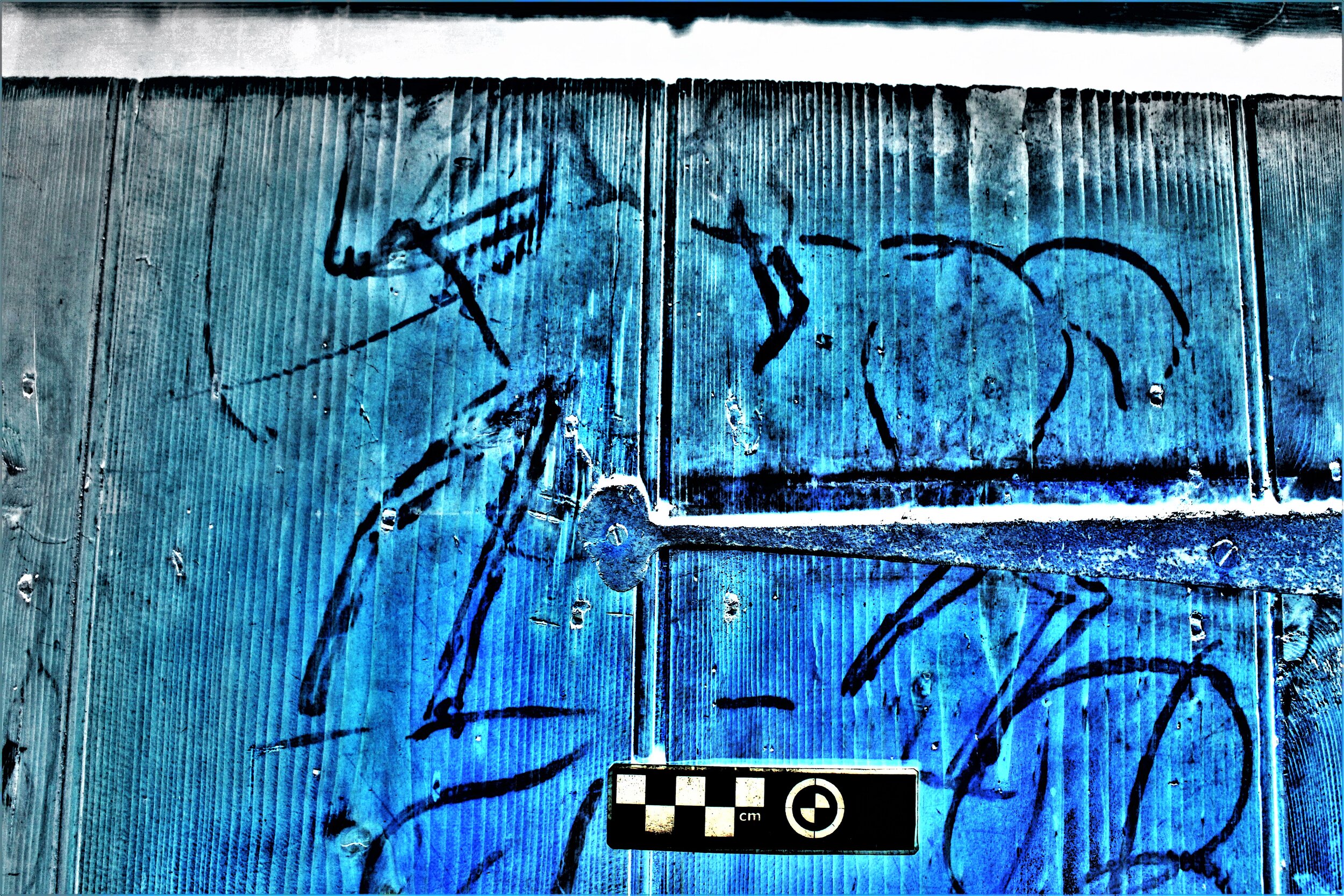
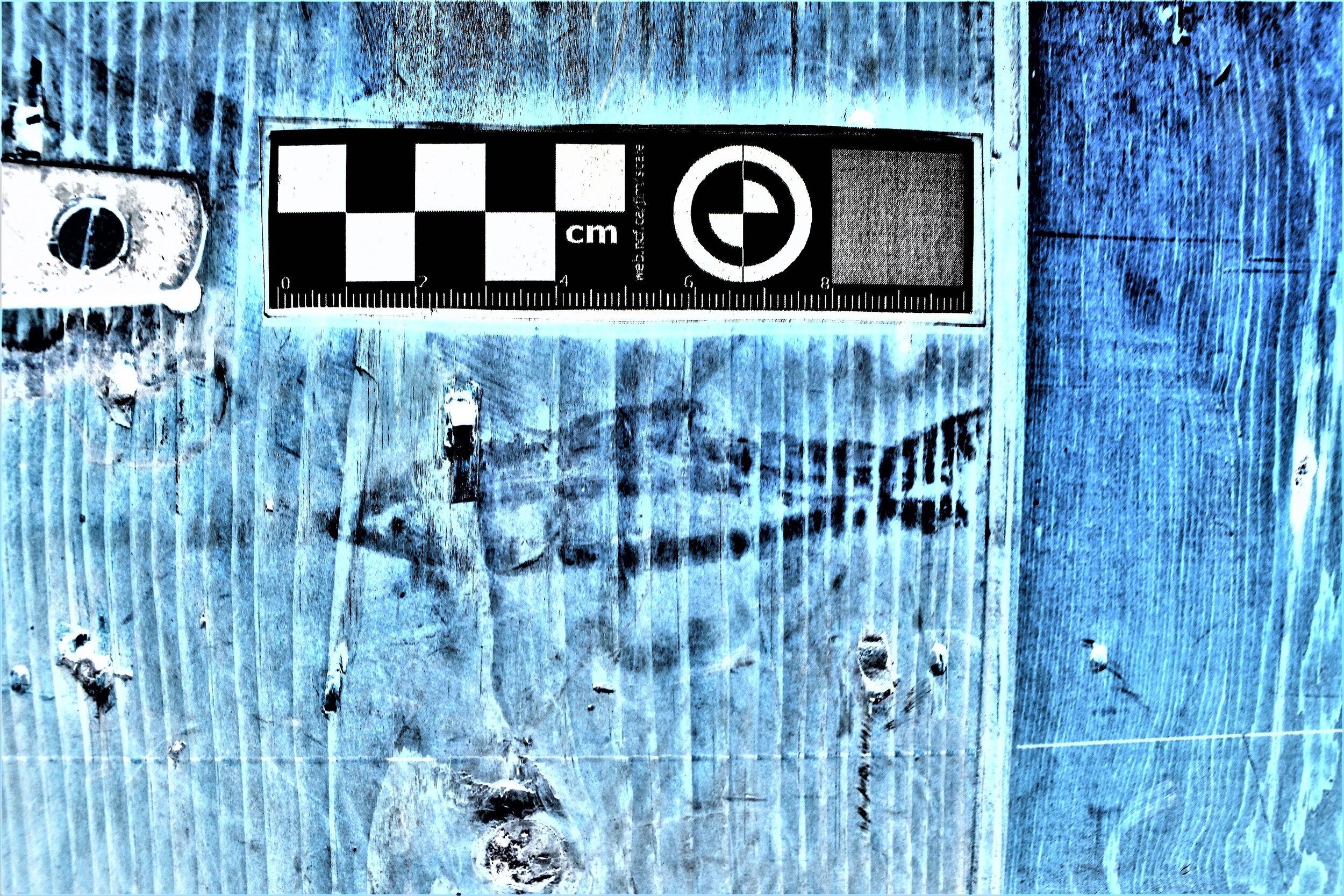
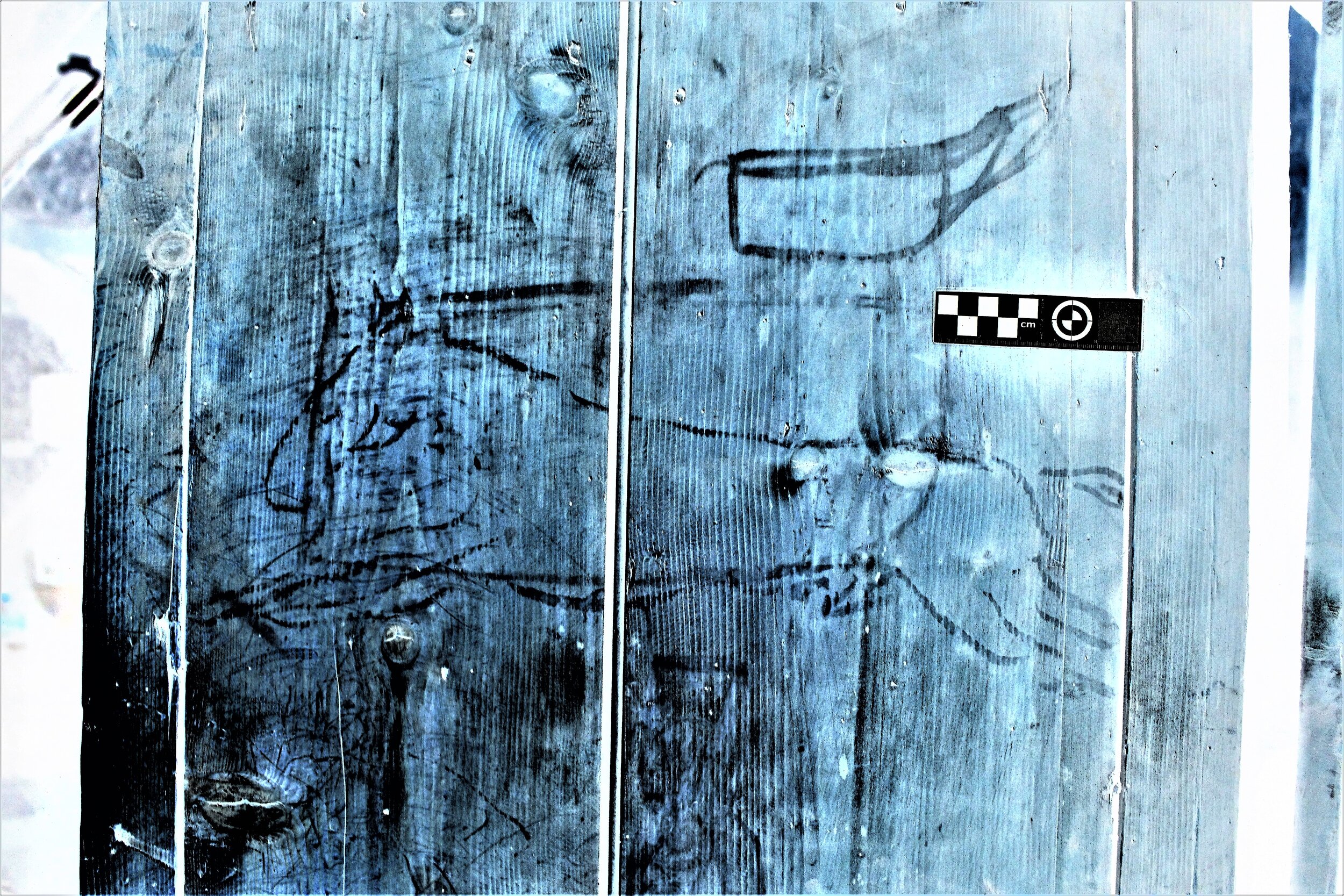
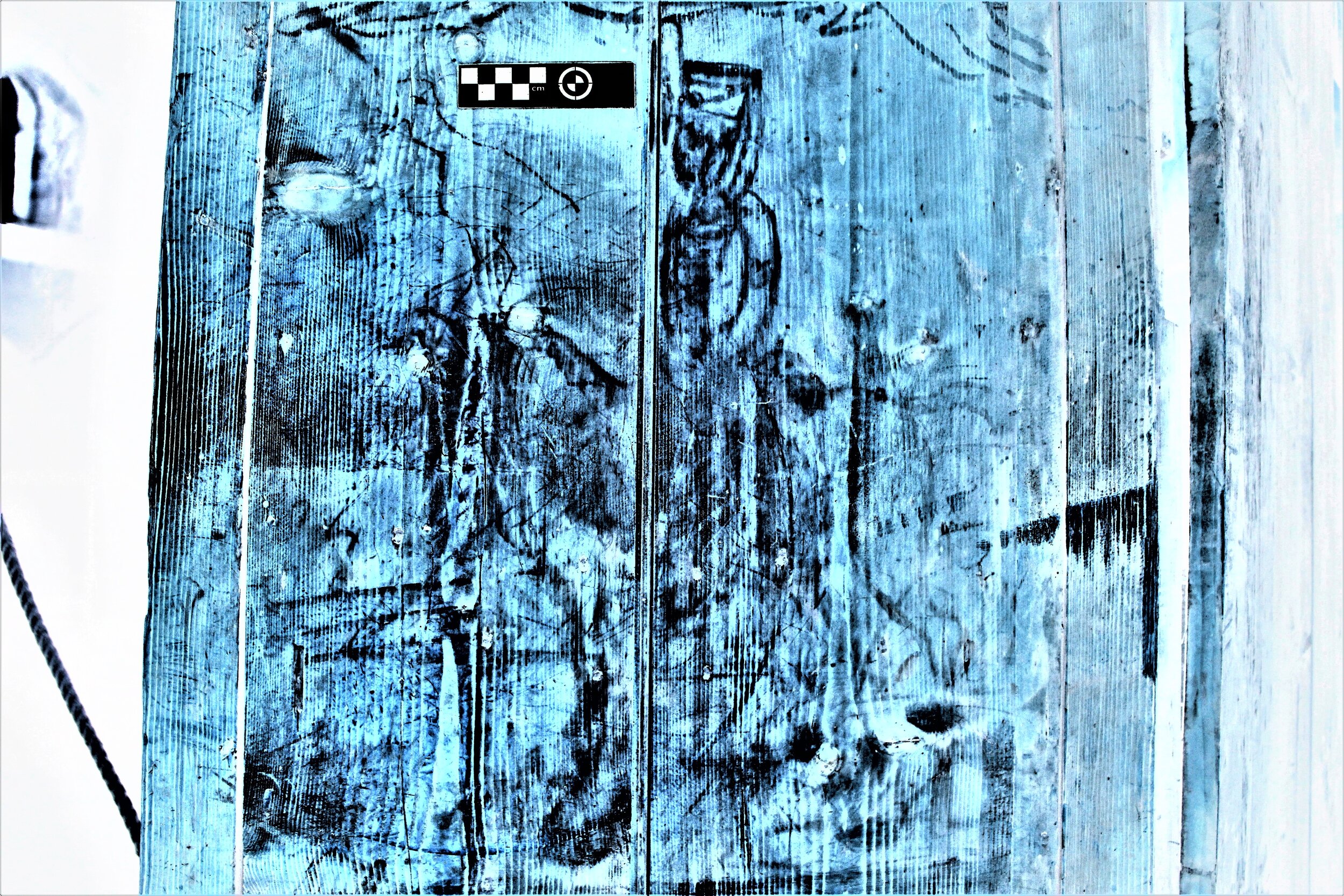
Plants are comparatively rare. Plants are far more common within the medieval paint schemes of the north quire transept and the crypt.Aside from curvilinear designs that have been described as ‘daisy wheels’, there are three tiny inscribed flowers and two possibly larger designs on the piers of the nave.
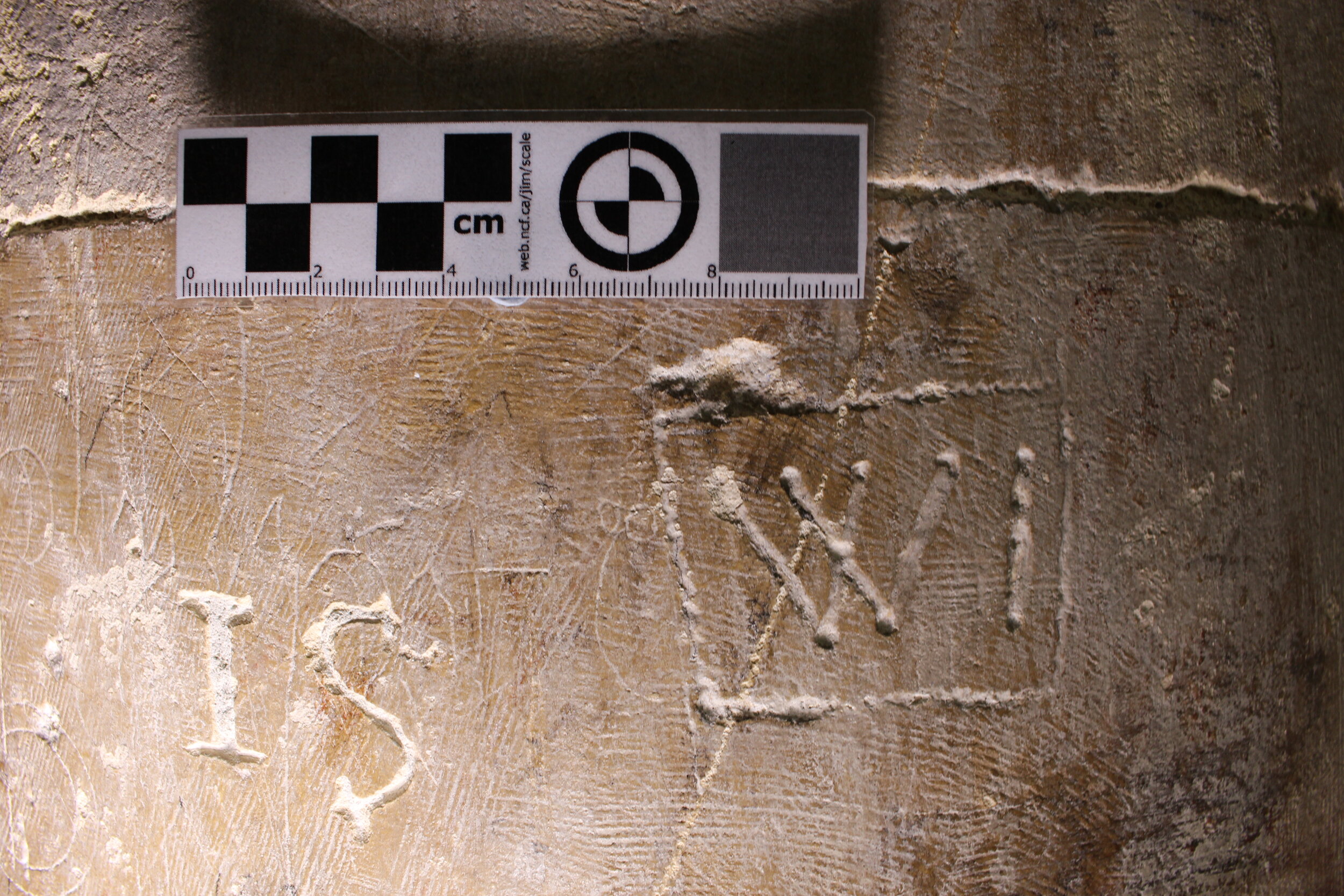

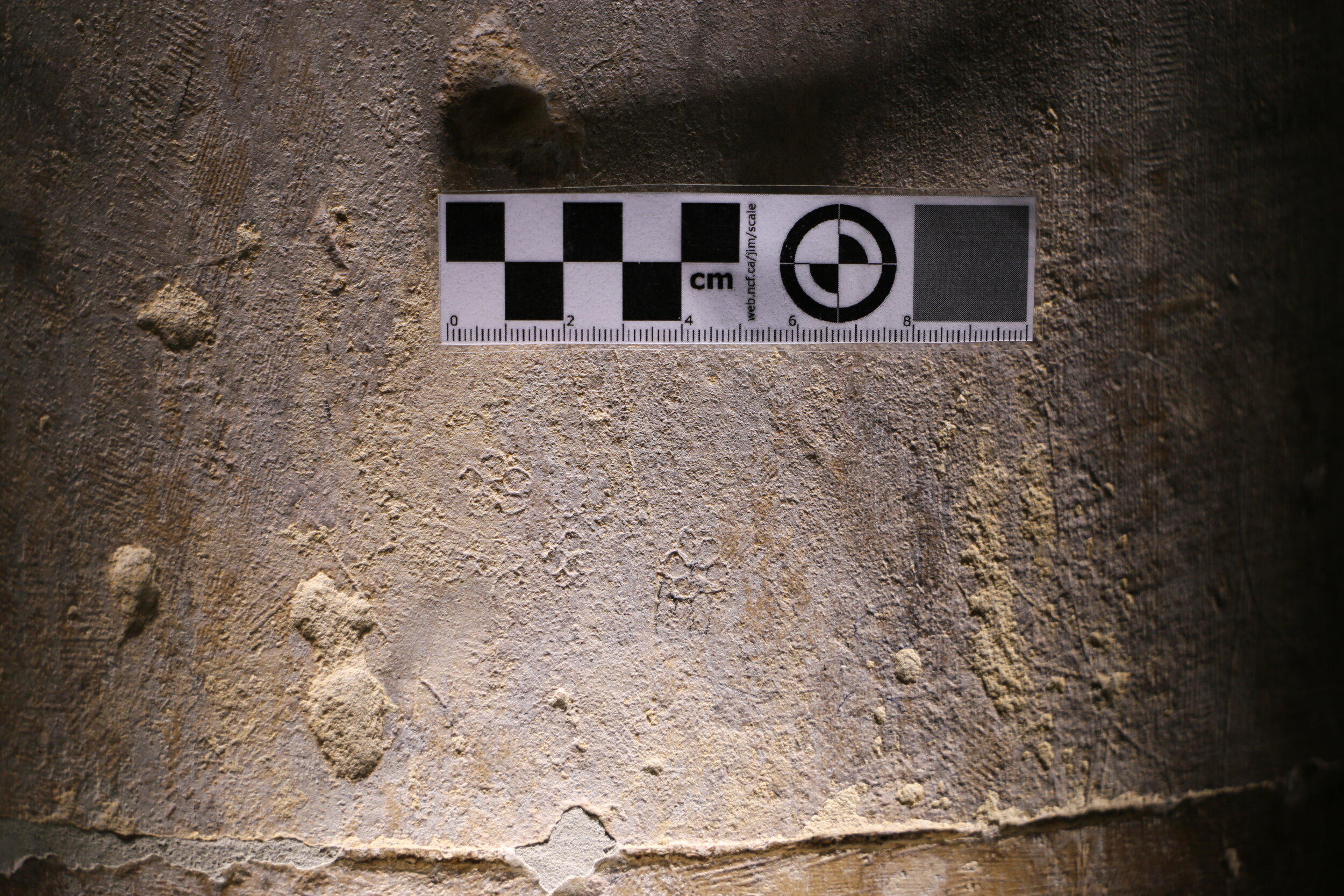


Below one elaborate inscribed curvilinear design may be a fragmentary horned imp or demon.
The photographic graffiti survey at Rochester Cathedral begun in 2016 has recorded over 7,000 inscriptions from the 12th to the 21st century.

